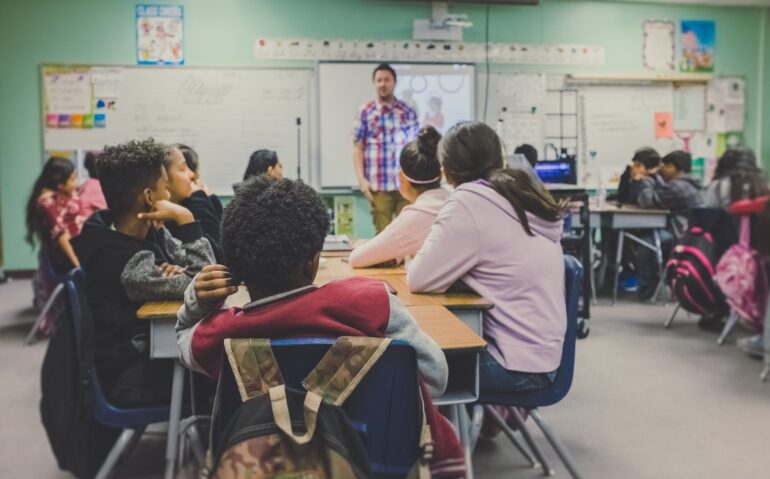TL;DR:
- Stanford scholars Dora Demszky and Rose Wang are pioneering NLP tools for teachers.
- They prioritize maintaining the human connection in education, never replacing teachers.
- Expert input from teachers plays a crucial role in shaping NLP education projects.
- Combining AI models with expert input enhances the quality of instruction.
- Their research focuses on improving math education and providing real-time teaching support.
- NLP systems are being used to reframe language and foster a growth mindset in students.
- The future envisions an integrated platform of NLP tools to support teachers effectively.
- Concerns exist about potential educational inequalities resulting from technological advancements.
Main AI News:
In a 2022 Gallup poll, American K-12 educators were identified as the most overburdened professionals. But can Natural Language Processing (NLP) tools alleviate their challenges? While contemporary chatbots have been instrumental in streamlining tasks such as lesson planning and parent communication, two luminaries from Stanford University, Professor Dora Demszky and Computer Science Ph.D. student Rose Wang, are charting a course that transcends mere time-saving measures.
Demszky and Wang are pioneering the development of models aimed at providing educators with invaluable feedback and suggestions, enabling them to have a profound impact on students’ learning and well-being. Their innovative approach prioritizes preserving the essential human connection within education, never replacing teachers with AI models. As NLP systems advance rapidly, they assert that the teacher’s role remains irreplaceable. “The human connection between the student and the teacher triggers motivation for learning. Building this with a robot is not feasible,” explains Demszky. “Our focus should be on enhancing the teacher’s work, not circumventing it.”
Incorporating Expertise into NLP
Creating effective classroom technology necessitates a deep understanding of pedagogy and student learning techniques, knowledge often honed through years of teaching. Demszky and Wang commence each NLP education project by collaborating closely with teachers. They begin by consulting educators to identify their specific needs and continually seek their input throughout the design and testing phases. Demszky emphasizes, “Our research wouldn’t be possible without the valuable insights of these educators.”
Teacher feedback often steers their research in new directions. For example, in a project aimed at developing a large language model (LLM) to tutor math students via online chat, they initially assumed that math teachers began by selecting a strategy to help students comprehend. However, interviews with math teachers revealed that their first step involved pinpointing the source of a student’s misconception. Wang notes, “We wouldn’t have delved into this level of detail without the input of experienced math teachers. The devil is truly in the details.“
When students were asked to rate the feedback provided by LLMs compared to teachers, the latter consistently received higher ratings. Nevertheless, when LLM responses were refined with input from teachers, including identifying student mistakes and suggesting specific strategies, the LLMs garnered significantly higher ratings. Although not equivalent to a teacher, this approach demonstrated the potential of combining AI models with expert input to create scalable and high-quality instruction, according to Demszky.
Enhancing College-Level Math Education
In a separate project, Demszky and Wang explored the application of NLP to college-level math education, using MIT OpenCourseWare YouTube lectures. Their research involved analyzing online student comments during discussions and developing a large dataset called SIGHT, comprising lecture transcripts linked to student comments. They trained an LLM to categorize comments into confusion, clarification, and gratitude. Additionally, they are working on Backtracing, a framework that prompts LLMs to identify the specific text, causing confusion in student comments. Their objective is to encourage online lecture creators to revise their content more effectively.
Your AI Teaching Assistant
Another promising avenue of their research is an NLP system serving as a teacher’s assistant, offering real-time suggestions to enhance in-person lessons. Demszky envisions this as a “nonjudgmental coach” that tailors advice, especially for novice teachers, and continues to provide guidance as they gain experience. In a study published at ACL’s Workshop on Innovative Use of NLP for Building Educational Applications, they utilized ChatGPT as a coaching tool. While 82% of the model’s suggestions mirrored what teachers were already doing, further refinement led to more tailored prompts.
Reframing Language for Student Growth
Demszky and Wang have also explored a growth mindset-oriented NLP system, aiming to reframe teachers’ language to foster student skill development. When they prompted GPT-4 to rephrase a teacher’s comments using a growth mindset approach, students rated the model’s reframings as superior to teachers’ language, showing potential for enhancing student outcomes.
The Path Forward
Demszky and Wang have focused on addressing individual teaching aspects with NLP systems so far. However, they envision a future where multiple NLP tools work in harmony within an integrated platform to prevent overwhelming teachers with an abundance of tools. Nevertheless, they express concerns that this future may exacerbate educational inequalities. They emphasize the importance of ensuring that AI research prioritizes tools that genuinely support teachers and students, with the goal of raising the educational floor for all.
In their words, “It’s not about raising the ceiling of educational tech but raising the floor of education with these tools.”
Conclusion:
The innovative work of Demszky and Wang in developing NLP tools for educators holds significant promise. Their commitment to preserving the teacher-student connection while enhancing the teaching process is commendable. The incorporation of expert input and the use of AI models offer the potential to improve the quality of education. The market should take note of these developments, focusing on creating tools that genuinely support teachers and students, with an aim to elevate the standard of education for all, while also addressing concerns of potential disparities.

